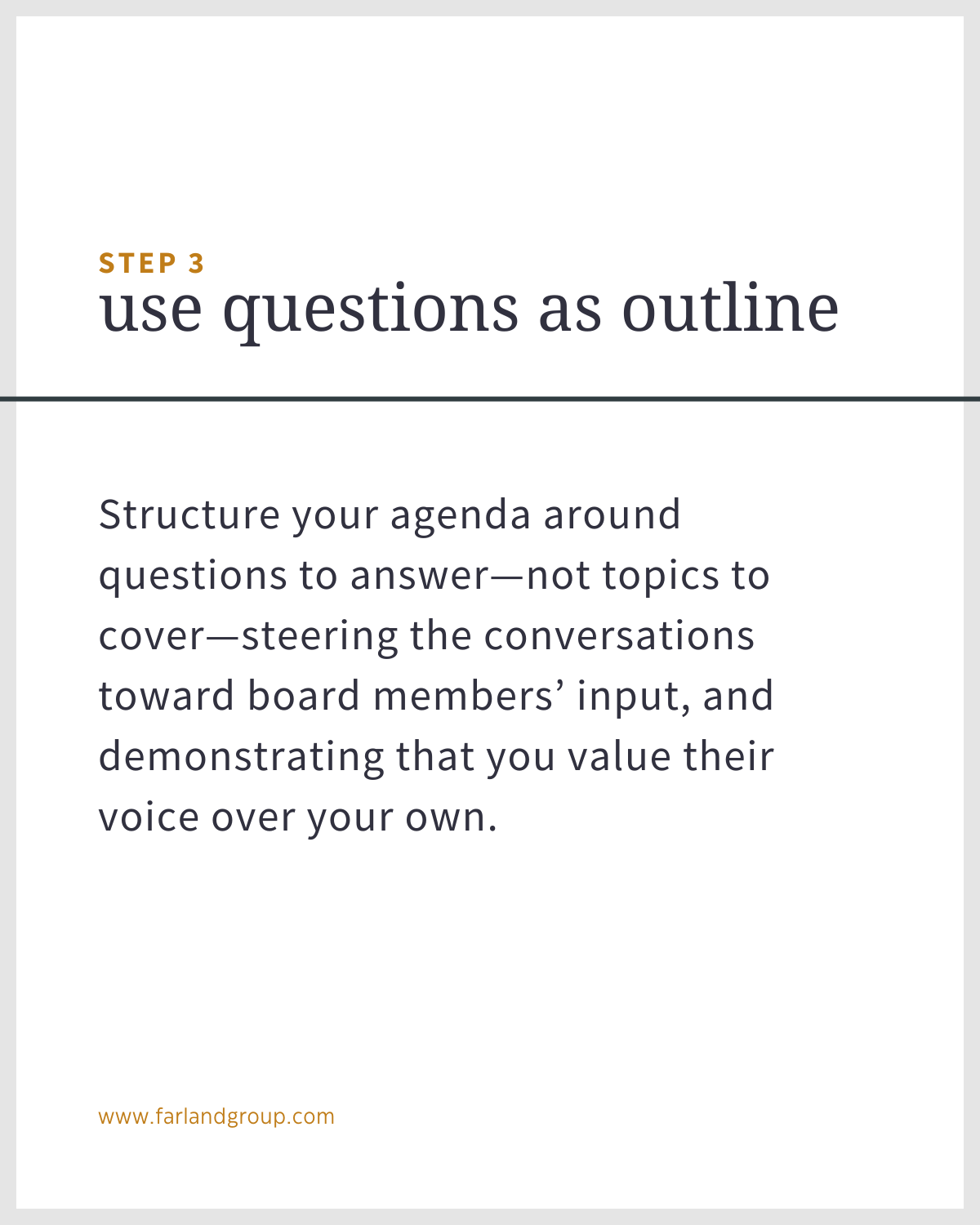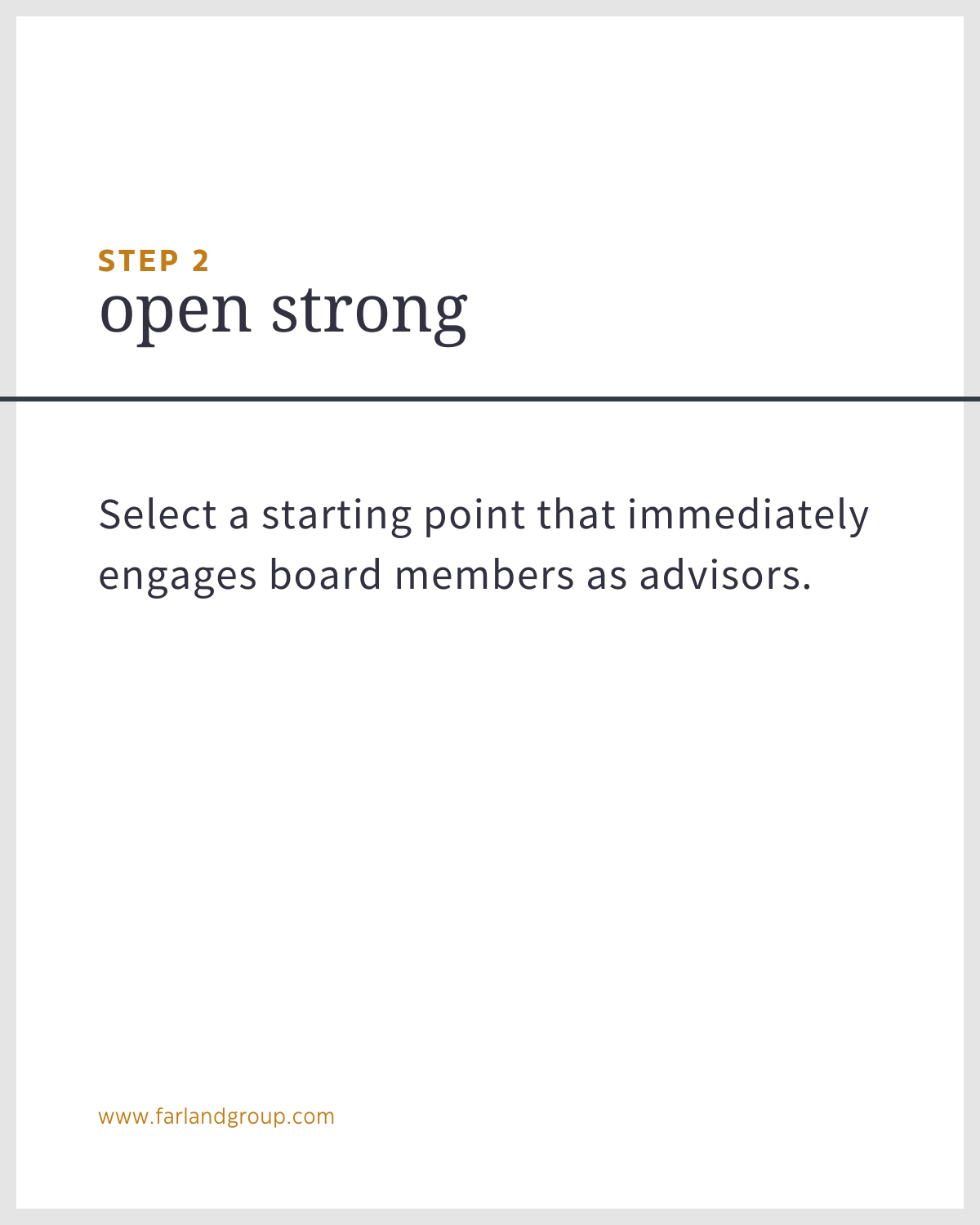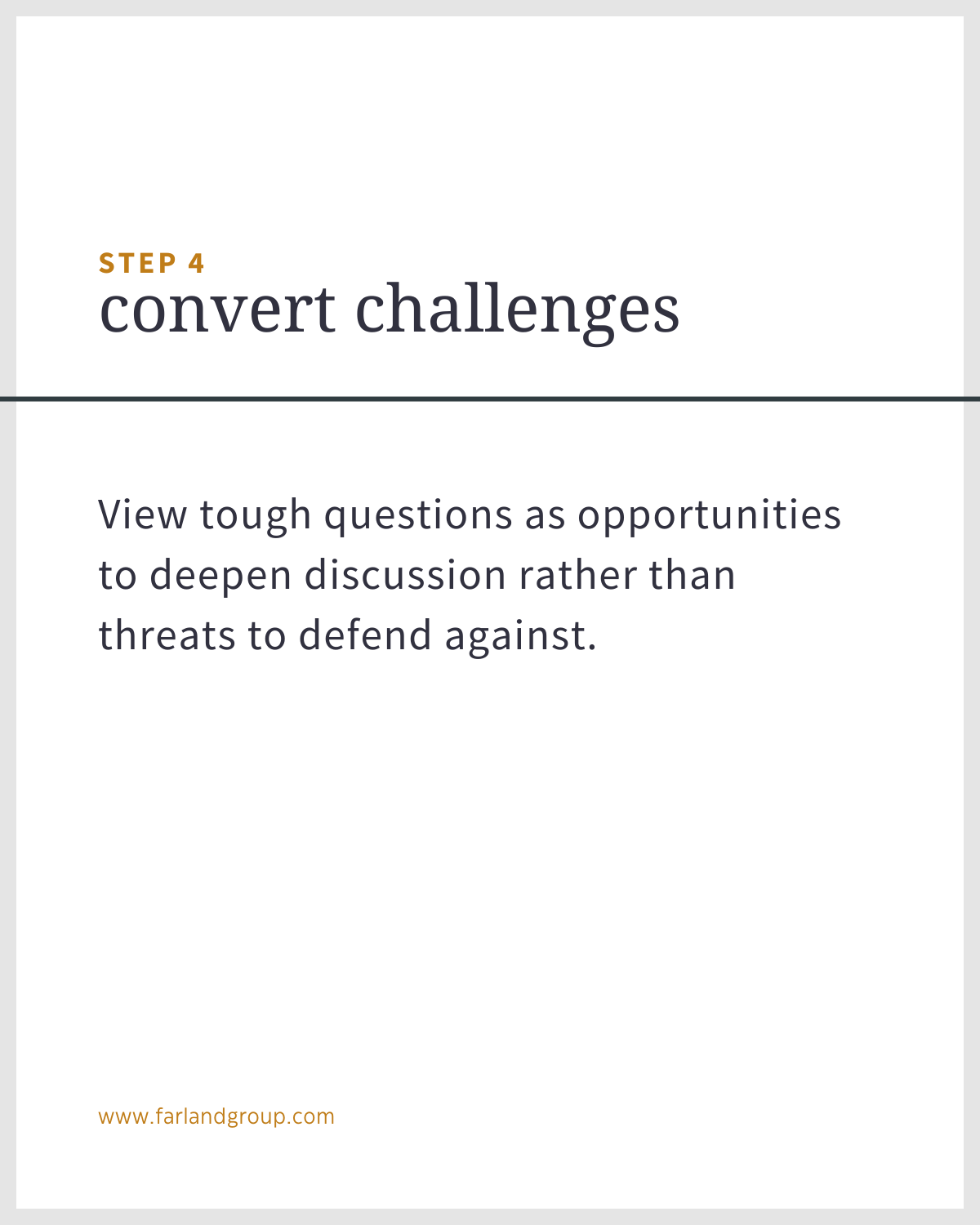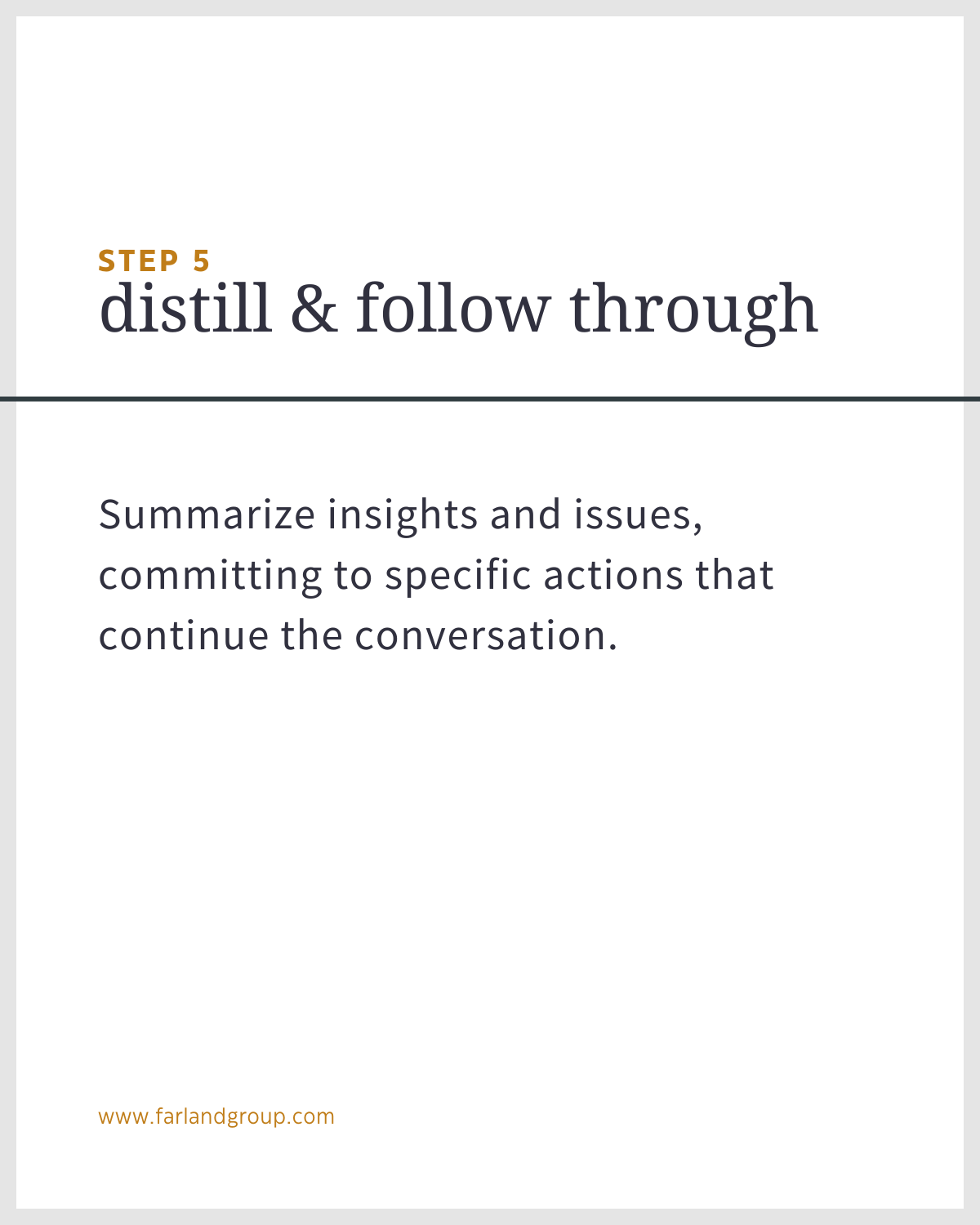The Secret to Dynamic Board Discussions: Structure Your Time Around Questions, Not Topics
In our Executive's Guide to Customer Advisory Board Discussions, we've explored a 5-step framework to transform your customer advisory board presentations into productive discussions.
In Step 1, when you framed your session as a discussion, you identified key questions and sketched some talking points. In Step 2, you also decided how to open the conversation.
Now, in Step 3, you can use it all to facilitate an energetic give-and-take, structured around your questions.
Keep in mind that, for a board, as little as 10 minutes can be too long to sit, listen, and not speak. The sooner they talk, the higher the energy in the room.
Beyond the Opening: Maintaining Momentum
The strong opening you chose in Step 2 sets the stage, but what happens next determines whether your session delivers valuable insights or devolves into a passive presentation.
The common mistake? Structuring your time around topics rather than questions.
When executives organize their advisory board sessions around topics ("Our Product Roadmap," "Market Expansion Strategy"), they naturally fall into presentation mode—sharing information rather than soliciting advice. The result? Board members sit passively for extended periods, and the opportunity for dynamic interaction fades.
The Question-Based Alternative
Instead of organizing your time around topics, structure it around your key questions...the same ones you identified in Step 1.
This approach changes the dynamic by:
Keeping discussions focused on what you genuinely need input on
Limiting how long board members must listen before engaging
Signaling that you value dialogue and listening over your own voice
Creating natural engagement points throughout your session
A Structure for Maximum Engagement
For advisory board sessions, consider this question-focused flow:
Open strong…
Begin with your selected opening strategy to establish the purpose, preview the key questions, and what you want from board members.
Example: "Today we'll explore three questions. First, have we accurately identified the barriers to entry? Second, are our proposed modifications sufficient to meet regulatory requirements? And third, which customer segments should we prioritize? We hope you'll challenge our assumptions and share relevant experiences from your own organizations."
Take note: No matter how long your session, fewer than 10 minutes should pass by the time you've opened discussion on your first question.
…then, for each key question:
Provide minimal context — just a few minutes
Pose your question explicitly and invite a first response
Facilitate discussion, asking follow-up questions and for different perspectives
Reflect back what you heard, and transition smoothly to your next question
Close deliberately
Synthesize the key insights
Commit to specific follow-up actions
Visual Support: Use Slides as Scaffolding Only
If you need slides or other visual support, use them as spare and intentional scaffolding—the minimum necessary to provide critical context and to frame the discussion. (Remember the key talking points you itemized in Step 1.)
If you set up a strong discussion, it's guaranteed you won't get through a robust presentation deck. And if you start with or default to that robust deck, it’s guaranteed you won’t hold a strong discussion.
If you've provided sufficient and effective pre-meeting reading material, many discussions can make do with a simple one-pager or a few slides to serve only as visual prompts.
Facilitation Support: Don’t Go it Alone
If all goes well, there will be many voices, ideas, follow-on questions, and themes to hear...and hear well. It’s a lot for one person to manage alone.
Teaming with a facilitator—either a designated peer or an outside partner—can help you invite contrasting perspectives, direct questions to specific members, synthesize periodically, connect comments to your original questions, and keep your eye on the clock.
Looking Ahead: Converting Challenges into Conversations
In a productive dialogue, challenging questions are almost inevitable. In our next post, we'll explore how to convert potential challenges into constructive conversations.
By mastering all five steps of our framework, you'll transform your advisory board from a passive audience into active partners in shaping your company's strategic direction.





